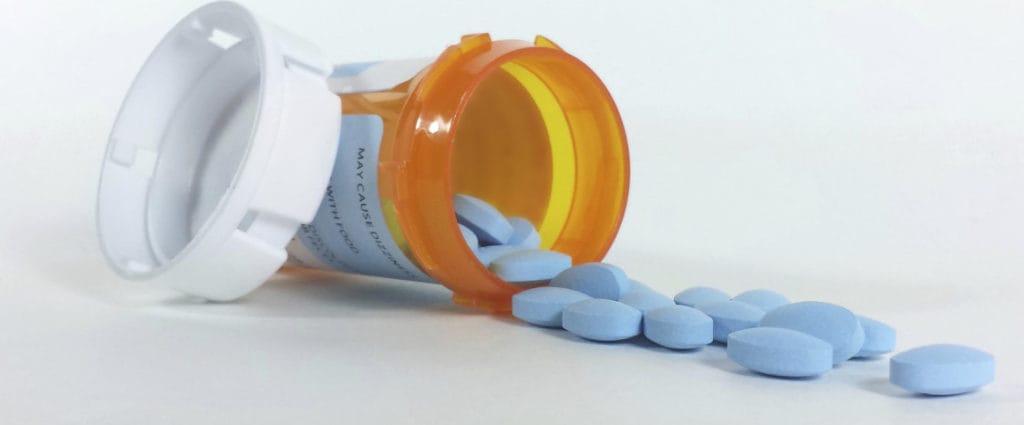It might seem like an odd concept: using drugs to gain control over drug use. But especially for people addicted to opioids such as heroin or prescription painkillers, medication-assisted treatment with drugs such as Suboxone (a mix of buprenorphine and naloxone) or methadone can save lives. The Substance Abuse and Mental Health Services Administration (SAMHSA) has long recognized this paradox, and it wants states that receive its funding to recognize this reality as well. For the first time, SAMHSA has included language in its substance abuse prevention and treatment block grants that “strongly encourages” adding medication as an option in clinical care. Some people interpret the new wording as an effort to get away from the abstinence-only model of addiction treatment that some treat as the only acceptable goal. But Anne Herron, SAMHSA’s director of the division of regional and national policy liaison, said the change is more about making sure medication has a place at the treatment table. “What we want is for states to provide a full continuum of services, which include behavioral therapy as well as medication-assisted treatment,” she said. “So it’s not one or the other. It’s that some people need the additional support that medication can provide and others don’t. And we want states to be able to offer all of the actions that work really well for their clients.” Through avenues such as its annual block grants, SAMHSA is one of the largest providers of federal funding for substance abuse prevention and treatment programs. Every few years, the language in its grant applications is updated to reflect the latest initiatives and research findings. The wording is a way of “reinforcing activities that we want the states to consider,” Herron explained. The fiscal year 2016-17 block grant application puts that reinforcement this way: “There is a voluminous literature on the efficacy of FDA-approved medications for the treatment of substance use disorders. However, many treatment programs in the U.S. offer only abstinence-based treatment for these conditions. … SAMHSA strongly encourages the states to require that treatment facilities providing clinical care to those with substance use disorders be required to either have the capacity and staff expertise to use MAT [medication-assisted treatment] or have collaborative relationships with other providers such that these MATs can be accessed as clinically indicated for patient need. Individuals with substance use disorders who have a disorder for which there is an FDA-approved medication treatment should have access to those treatments based upon each individual patient’s needs.” The new language went through a public comment process, Herron noted, and almost all of the states provided feedback. “It was overwhelmingly supportive,” she said.
An Opioid Epidemic
In the menu of medication options, one of the most promising and increasingly popular is buprenorphine. It’s an opioid, but it doesn’t produce the euphoria of heroin or prescription painkillers such as oxycodone or hydrocodone. But it does block withdrawal and diminish cravings. That means a person addicted to opioids who uses buprenorphine correctly has help normalizing and getting on with their life, no longer consumed by the need to seek opioids in order to satisfy cravings or avoid the pain of withdrawal. And because buprenorphine limits the high from opioids, deadly overdose also becomes much less likely. Buprenorphine is most commonly marketed under the name Suboxone, to which naloxone has been added to make the blend harder to misuse. In some cases, Suboxone is used as a short-term solution for an addicted person seeking to move to abstinence, but in many cases it’s used as part of a long-term maintenance program. Drug overdoses now surpass even traffic fatalities as the leading cause of accidental death in the U.S. Many of those overdoses can be blamed on a rampant overprescribing of prescription painkillers that began in the 1990s. When the problem was recognized and prescriptions became harder to get, many people who’d become addicted turned to another opioid, heroin. As a result, heroin deaths nearly quadrupled between 2002 and 2013. Because relapse rates are so high with opioids and overdose is a constant threat, medication-assisted treatment has become a life-saving option for those unable to quit on their own. Medication can also provide powerful help for people struggling with other substances, such as alcohol and nicotine.
An Addiction Prescription
How much the federal government will earmark for the block grants won’t be known until the budget is finalized, Herron noted, but she said officials expect the final amount to match the $1.8 billion received for the 2015 grants. Each state submits a plan for what it intends to do with its share of the funds, and the money eventually makes its way to nonprofit providers of prevention, treatment and recovery support within communities across the nation. SAMHSA’s new grant language doesn’t mean those states that apply for and receive funding must commit to providing medication-assisted treatment. “There are parameters around the block grant, but within the parameters, the states have flexibility on how they use it,” Herron said. But the organization hopes medication-assisted treatment becomes more common for people struggling with addiction, which SAMHSA and most public organizations recognize as a disease that affects both the brain and behavior. For those who resist the notion of using medication to address substance use disorders, Herron offers this thought: “It really isn’t so different from high blood pressure, hypertension or diabetes. Some people can address those diseases with diet and exercise, as well as changes in their lifestyle. Others need to get on some medication to help control their blood pressure or their blood sugar.” “It’s really not a whole lot different with addiction. Some folks can address the addiction and can address the behaviors through lifestyle changes and cognitive behavioral therapies. Others need some medication to provide assistance,” she said.

